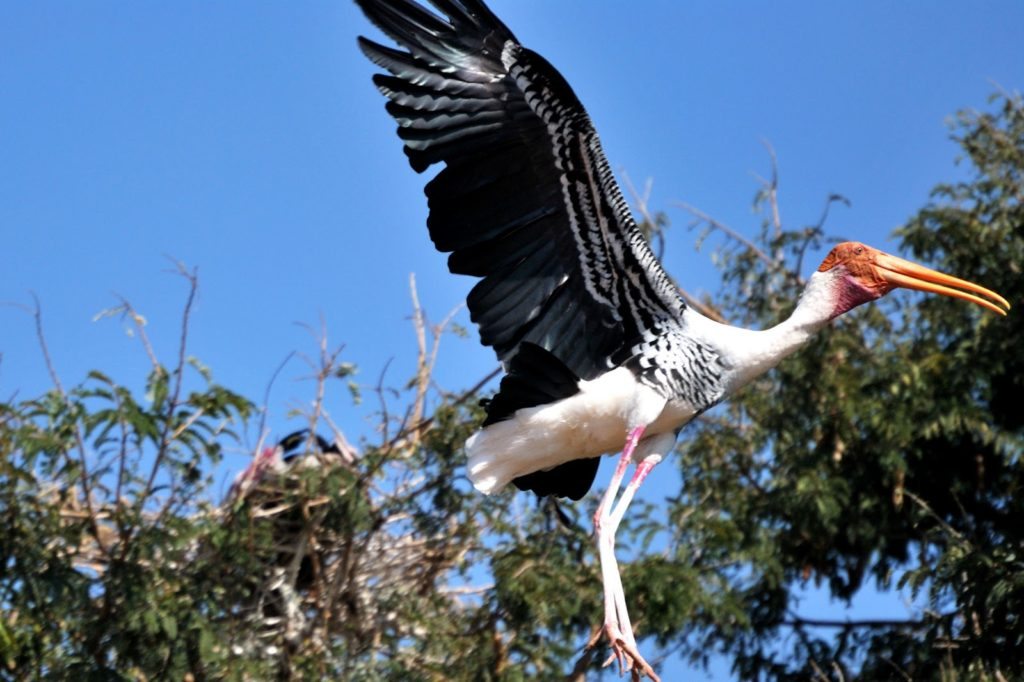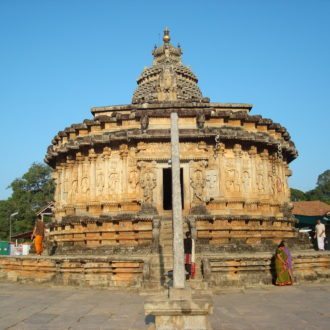Kaggaladu Bird Sanctuary – a community protects the painted storks
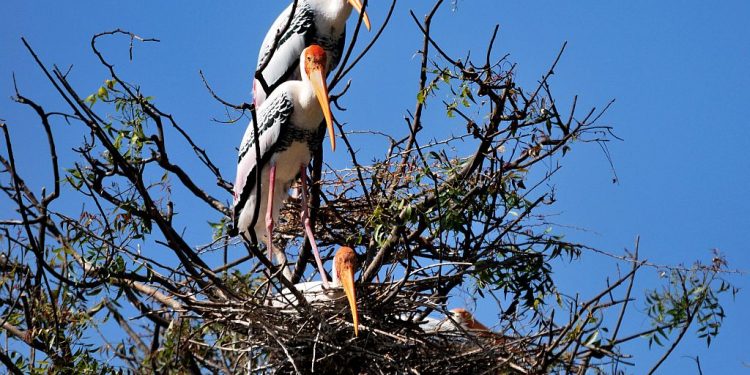
It is a sea of white wings that greets me in a dusty little hamlet near Sira town, located near Tumkur in Karnataka. A flap of a wing, a gentle glide across the sky, a moment of contemplation before perching on a branch, my eyes follow a painted stork until it merges with the palette of colours on the trees. I look closer and the colours show themselves – a montage of pinks, whites, greys and greens. The verdant trees play host to these birds that have been nesting here for years. I am in an obscure little village that has found the attention of the painted storks and grey herons more than two decades ago. In fact there is no milestone or a board to announce the name of the village. It is very easy to give it a miss as it clones any of the innumerable villages of India. And yet it is the painted stork that gives Kaggaladu Bird Sanctuary its identity, Kaggaladu in fact is referred to as a “community bird sanctuary” as the villagers have forged a special relationship with the painted stork birds for the last two decades.Its the second largest bird sanctuary of painted storks in South India after Kokkrebellur located near Mysore.
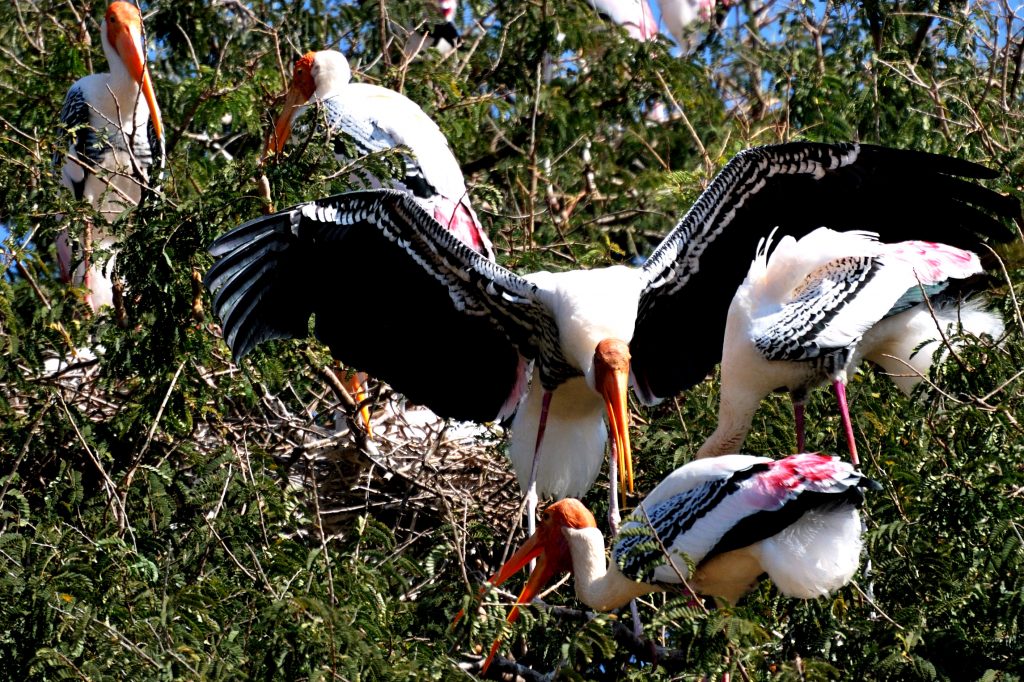
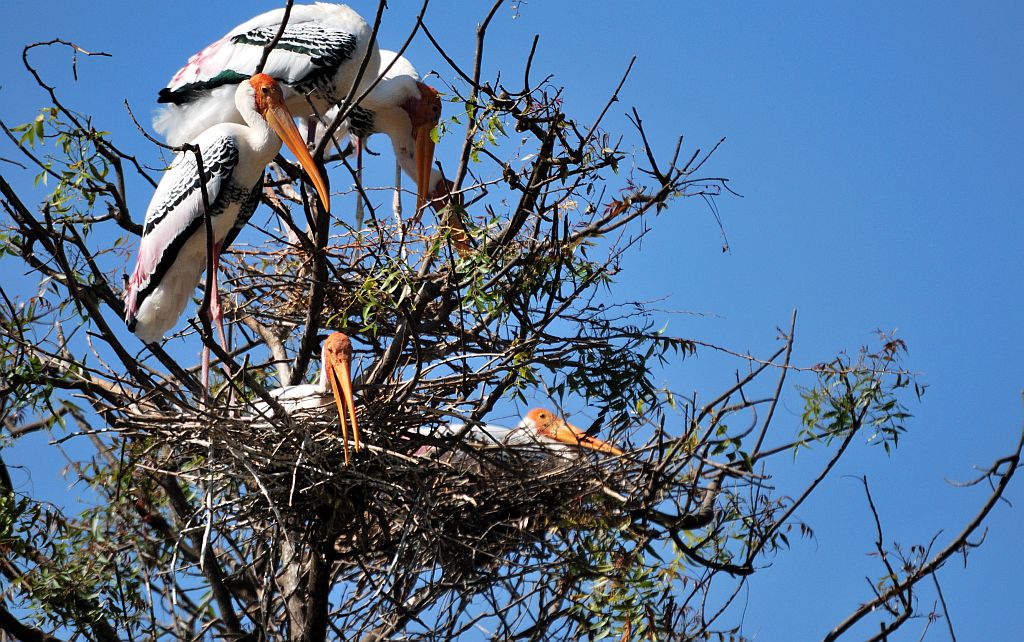
The tamarind trees are their favourites. Locals tell me that both painted storks and grey herons have been flocking here since the 1990s ever since they found these trees. It is believed that they came here from another village after some poaching activity had killed a few birds. The villagers are proud of their birds. Two small boys take me to show a tree where the birds have built their nests in low-lying branches. They are barely shy of humans, being familiar with their hosts for years. The village has turned into a full-fledged heronry, but the villagers want to keep the Kaggaladu Bird Sanctuary away from noisy tourists 
I walk around and see a few homes scattered around the fields, some men enjoying their afternoon siesta while a few women are carrying stacks of hay. My young guides show me a tank filled with painted storks, grey herons, pond herons and a few water birds. I have been birding in different destinations in Karnataka , from Galibore to Ganeshgudi, but this is special. I follow the young lads as they take me inside a “kote” a small stone wall, which they believe was once a part of a fort.
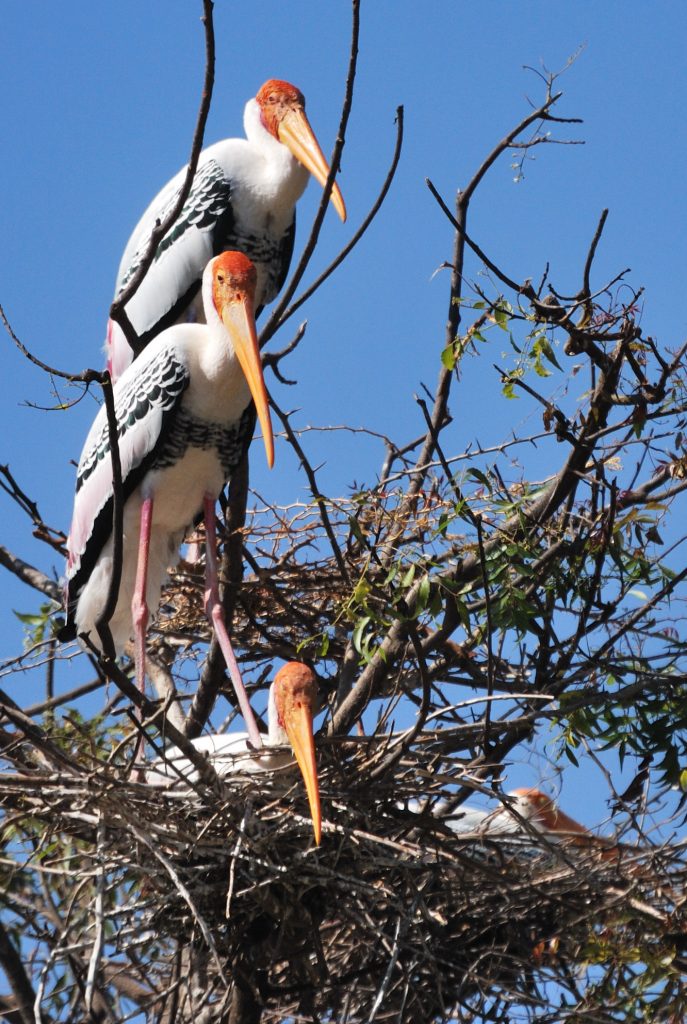
Surrounding the wall are a few tamarind trees that are completely dotted by these painted storks. While some are busy nesting, others are building their nests. The villagers have openly welcomed their guests and have adopted them as they believe that the birds are omens of good luck that bring prosperity. They share a special relationship with the avian creatures and they do not want their peaceful co-existence altered in any way, and that for them includes an absence of noisy tourists who will frighten the birds away. “Come and see them, but please do not disturb,” they say.
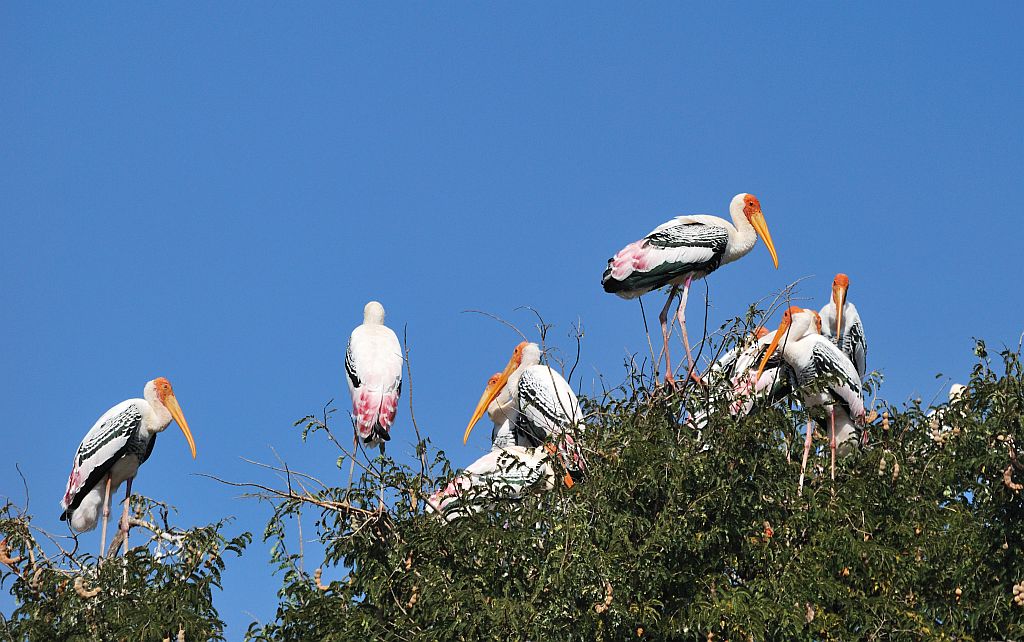
The calls echo through the air, as the painted stork birds are busy with their nests in Kaggaladu Bird Sanctuary while the villagers are lost in their daily chores. I stand there for a long time, watching them in their own habitat, secure from predators and poachers, building homes for the future. A sheath of white blinds me as a flock of winged visitors head out for a break. I follow them to the road and we part ways there. As I leave, I realize that it is these silent efforts of the villagers that have helped in the conservation and protection of the birds. For them, it seems to be more than just a duty as they have forged an emotional bond with these winged creatures. What touches me the most is their simple affection for the birds sans a holier than thou attitude. And that is probably what brings the birds back to the villages every year.
